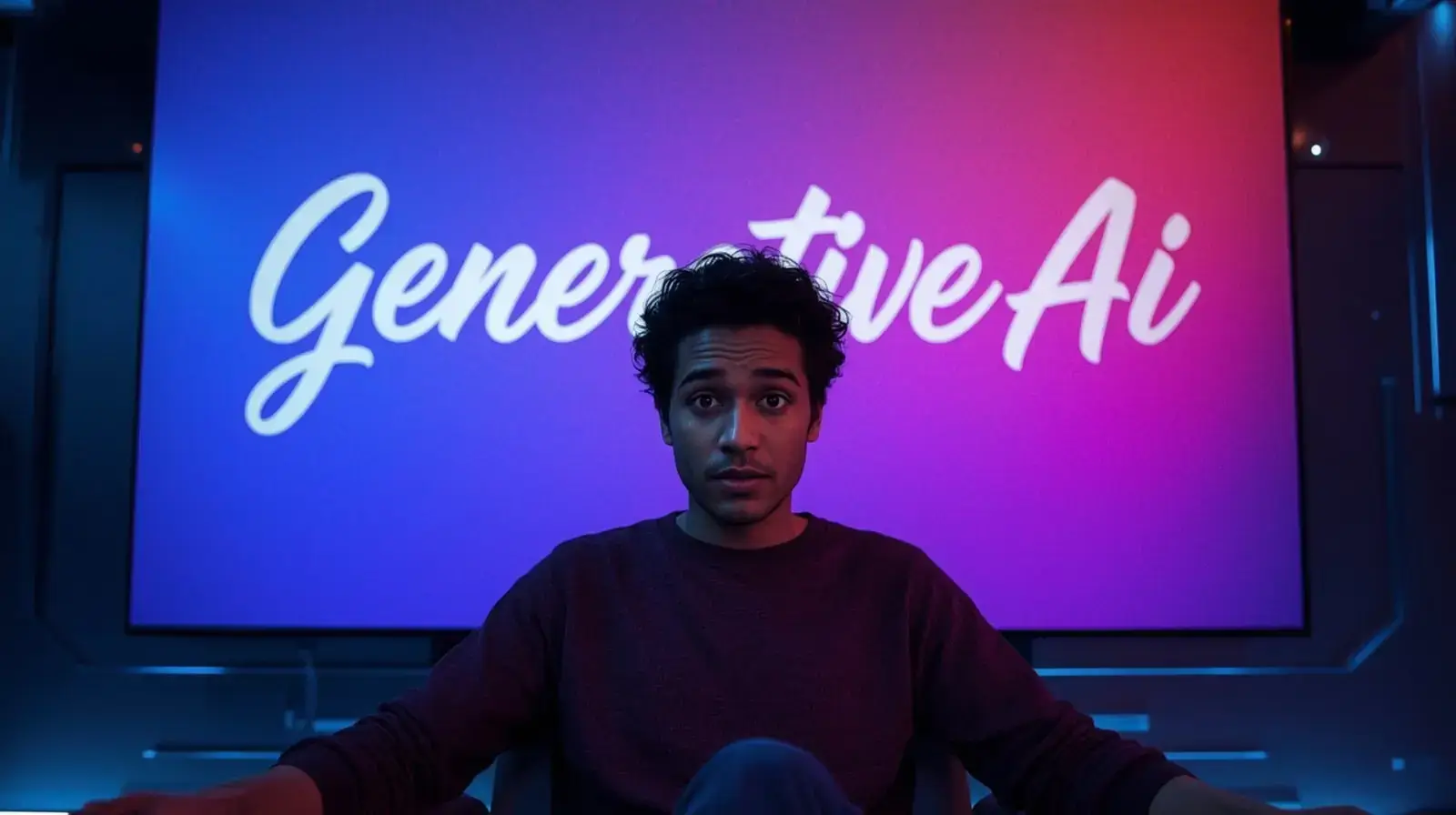What is Generative AI?
A beginner-friendly yet expert-level guide to Generative AI—explained simply for students, deeply for AI enthusiasts.

Generative AI has quickly moved from being a futuristic concept to a practical tool used by businesses, developers, and creatives every single day. From ChatGPT writing assistants to RunwayML video generators, this technology is shaping industries by automating content creation, boosting productivity, and even rethinking how companies design products and services.
But what exactly is generative AI? How does it work, and what are the opportunities (and risks) that come with it? Let’s break it down in detail.
Key Highlights
Definition: Generative AI creates original content such as text, images, audio, video, and even software code by learning from large datasets.
Examples: GPT models for text, GANs and diffusion models for images, and neural networks for music.
Why it matters: It reduces the time needed for content creation, supports innovation in design and marketing, and opens new ways to personalize products and services.
Challenges: Issues include biased outputs, high computing requirements, explainability problems, and ethical concerns like misuse for misinformation.
Understanding Generative AI
Generative AI refers to a category of systems designed to create new data rather than just analyze existing information. Unlike traditional AI, which focuses on predictions or classifications, these models generate original material that looks and feels human-made.
How It Works at a Glance
Learning phase: AI models are trained on massive datasets—text, images, or audio—to identify patterns and structures.
Representation phase: The system captures hidden data relationships (often called latent features).
Generation phase: Based on learned distributions, it produces new outputs—whether that’s a paragraph, a photo, a melody, or lines of code.
If you’re new to AI basics, you might want to explore our detailed guide on AI Fundamentals before diving deeper.
How Does Generative AI Work?
Let’s break the process into five stages that explain how generative AI produces its magic.
1. Data Collection
Every model starts with data. This includes structured (tables, databases) and unstructured (text, images, videos) sources. Public datasets, proprietary company data, and even sensor readings may be used. Cleaning and preprocessing remove errors or inconsistencies so the data is ready for training.
2. Model Training
The cleaned data feeds into advanced models such as transformers, GANs, diffusion models, or large language models (LLMs). These models learn probability distributions and correlations in the dataset.
3. Pattern Recognition
Once trained, the system understands statistical properties of the dataset. For example, it knows what makes a cat image different from a dog image, or how sentence structures form in English.
4. Output Generation
With that understanding, the system generates brand-new outputs. For instance:
A coherent blog post from a prompt.
A photorealistic portrait from a text description.
A code snippet solving a programming task.
If you’re interested in AI applied to code, check out our guide on How ChatGPT Can Write and Enhance Your Existing Code.
5. Refinement with Feedback
The final step is fine-tuning outputs with human review or reinforcement learning. This stage helps filter errors, align responses with intended goals, and maintain quality standards.
Benefits of Generative AI
Generative AI brings significant opportunities for organizations across industries.
Simplifying Content Creation
From blog posts to video ads, AI models like diffusion networks and GANs speed up creative work. A single prompt can generate unique visuals for marketing campaigns, making production faster and more cost-efficient.
Better Data Utilization
Synthetic data generation fills gaps when real-world datasets are incomplete or imbalanced. This is especially valuable in sensitive domains like healthcare, where access to patient records is limited. Related read: AI Tools That Don’t Hallucinate.
Personalized Experiences
Generative AI supports hyper-personalization. For example:
Retailers can generate tailored product recommendations.
Education platforms can design adaptive learning modules.
Healthcare systems can build custom treatment simulations.
Accelerating Prototyping
AI accelerates early design phases in architecture, product development, and software engineering. Prototypes that once took weeks can now be built in hours.
Streamlining Complex Workflows
Tasks like data summarization, report generation, and visual analysis can be automated. This frees human teams to focus on strategy and innovation rather than repetitive work.
Challenges of Generative AI
Generative AI is powerful, but it isn’t flawless.
Data Quality Risks
Outputs are only as good as the data they’re trained on. Poor or biased datasets can lead to misleading or inaccurate results.
High Computing Demands
Training models like GPT-4 or large diffusion systems requires enormous GPU resources, often making it cost-prohibitive for small businesses.
Black Box Problem
Generative models are difficult to interpret. Developers and end-users often can’t trace why the model generated a specific output.
Misuse and Ethics
Generative AI can be misused to create deepfakes, misleading media, or fake news. Read our blog on AI Ethics for a deeper discussion of these challenges.
Generalization Issues
Some models overfit (memorizing training data) while others underfit (missing key patterns), reducing their reliability in real-world use.
Types of Generative AI Models
Here are the most common generative AI architectures and what they’re best at:
| Model Type | Description | Best Use Cases |
|---|---|---|
| Generative Adversarial Networks (GANs) | Two neural networks compete, one generates data, the other checks realism. | Image generation, video synthesis, synthetic datasets |
| Diffusion Models | Add noise during training, then reverse it to form outputs. | AI art, photorealistic images, synthetic data |
| Large Language Models (LLMs) | Trained on massive text datasets to mimic human language. | Text generation, translation, summarization |
| Recurrent Neural Networks (RNNs) | Sequential models retaining memory of past steps. | Time-series predictions, music composition |
| Variational Autoencoders (VAEs) | Encode and reconstruct data for new samples. | Anomaly detection, data compression |
| Transformers | Use attention mechanisms for fast, parallel processing. | Code generation, chatbots, language modeling |
Curious about LLMs specifically? Explore our detailed breakdown of Large Language Models (LLMs).
Best Practices for Using Generative AI in Business
To integrate generative AI effectively, companies should consider practical strategies that balance innovation with responsibility.
1. Pick the Right Platform
Choose tools based on your requirements—whether text generation, image creation, or multimodal processing. Compare scalability, pricing, and compliance.
2. Focus on Prompt Crafting
Prompts shape results. Clear, detailed prompts produce better outputs than vague instructions. For advanced guidance, see our guide on Prompt Engineering Best Practices.
3. Define Usage Policies
Set internal guidelines for approved tools, safe data sharing, and quality standards. Introduce human review for sensitive or customer-facing content.
4. Track Performance and Costs
Monitor both quality (accuracy, relevance) and expenses (API calls, GPU costs). This prevents overspending while maintaining trust.
5. Prioritize Security and Compliance
Use platforms that follow GDPR, HIPAA, or regional compliance standards. Avoid submitting confidential data into public AI tools.
6. Integrate into Workflows
APIs make it possible to connect AI tools directly into business systems—automating reporting, marketing campaigns, or support tickets.
FAQs About Generative AI
What is generative AI in simple terms?
It’s a type of AI that produces original content (text, images, video, or code) by learning from existing data and then generating new outputs that didn’t exist before.
What are the main applications of generative AI?
Personalized marketing campaigns
Code generation and debugging
Synthetic image and video production
Enterprise data summarization
What are the benefits?
It speeds up prototyping, fills data gaps with synthetic datasets, and creates hyper-personalized outputs for end users.
What are the risks?
Challenges include biased datasets, expensive computing needs, lack of explainability, and potential misuse for misinformation or copyright violations.
Final Thoughts
Generative AI is no longer just an experimental technology—it’s becoming a core driver of innovation across industries. By learning how to apply it thoughtfully, businesses can gain efficiency, creativity, and personalization at scale.
At itirupati.com, we continue to track the latest AI tools, guides, and best practices so you can use this technology with confidence. Explore our AI tool directory to find the right solutions for your needs.
You may like related articles...
Subscribe & Get Free Starter Pack
Subscribe and get 3 of our most templates and see the difference they make in your productivity.
Free Starter-Pack
Includes: Task Manager, Goal Tracker & AI Prompt Starter Pack
We respect your privacy. No spam, unsubscribe anytime.
Featured*

QuillBot
AI tool that improves writing with smart paraphrasing, grammar checks & image generation.

Emergent
Build full-stack, production-ready software using plain-language prompts—no coding needed.

Sanebox AI
AI tool organizes your inbox by automatically sorting emails and reducing clutter.



